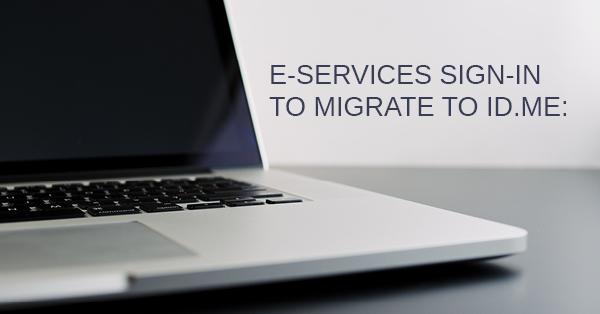E-SERVICES SIGN-IN TO MIGRATE TO ID.ME:

The Internal Revenue Service plans to migrate its set of online services for tax professionals to the third-party provider ID.me this summer despite objections being raised in Congress to the authentication company.
The IRS said in an email Wednesday to tax professionals that the following products and applications will be impacted:
Affordable Care Act (ACA) for Transmitter Control Code (TCC)
- Application Program Interface (API) Client ID Application
e-File Application
- Information Returns (IR) for TCC
- Income Verification Express Service (IVES) Application
- State Applications (State EFIN and TDS State)
- TIN Matching, including Bulk and Interactive TIN Matching
- Transcript Delivery System (TDS)
- Secure Object Repository (SOR)
- Modernized e-File (MeF)
- ACA Information Returns (AIR)
The IRS noted that while the e-Services applications will not use ID.me until this summer, tax professionals can get ready for the migration and set up an ID.me account now using Tax Pro Account.
If you need to create a Secure Access account for e-Services now but cannot authenticate your identity through the online Secure Access process, then you must contact the e-Help Desk for assistance. If the e-Help Desk cannot assist you in creating your account, they you will be advised to make an appointment at a Taxpayer Assistance Center (TAC) to prove your identity in person. The process to utilize the in-person proofing must be completed by June 15, 2022. If the process, through e-Services, cannot be completed by June 15th, then you must wait for the e-Services migration to ID.me has been finalized.
IRS Commissioner Chuck Rettig was asked by lawmakers at a Senate oversight hearing Tuesday on the IRS budget about the IRS’s plans to transition from ID.me to the federal government’s own Login.gov service, but he noted that Login.gov does not yet have the capacity to handle all the activity that the IRS is used to getting on its online services. However, the IRS is working with Login.gov to improve the authentication service’s capacity.
“We were receiving about a million people a week trying to create online accounts,” said Rettig. “The system we had before had about a 40% authentication rate, so taxpayers who would try to authenticate that, yes, this is Chuck Rettig, but about 60% were not getting into the system and had to walk into a site or call in.”
That was impractical when the IRS was dealing with a backlog of millions of tax returns to process last year. “With ID.me, the authentication rate is far in excess of 70%, both on the biometrics part, which is facial recognition, but taxpayers have the alternative to get online with a live ID.me person,” said Rettig. “Facial recognition is offered in eight different languages. The in-person is offered in more than 30 different languages. We have moved significantly from a service perspective into our multilingual efforts.”
He contrasted that to the current capacity of Login.gov. “Login.gov can handle less than 30 transactions per second,” said Rettig. “We need about 1,500 transactions per second. We need a Level 2 authentication that once this person is in, this is the person.”
The IRS is looking at other alternatives, Rettig noted, while also trying to improve the bandwidth at Login.gov. In the meantime, ID.me will be able to support the suite of e-Services envisioned by the IRS. However, the agency has faced data breaches in 2015 on some of its self-service tools such as Get Transcript and Identity Protection (IP) PIN and needed to shut them down to add better authentication in 2016.




